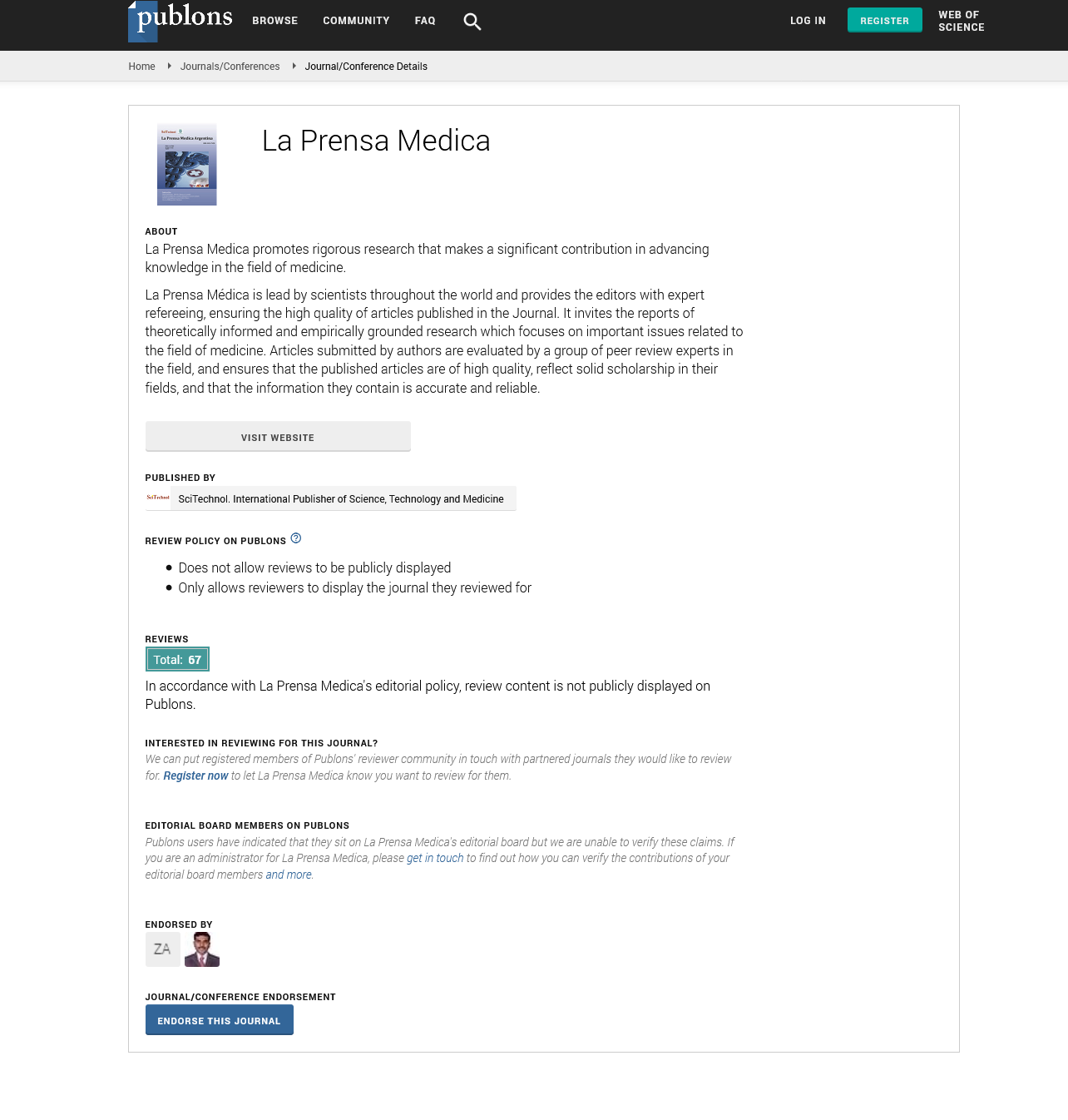Commentary, La Prensa Medica Vol: 108 Issue: 3
Granular Corneal Dystrophy Type1
Simonia Corimder*
Department of Cell-Material Sciences, Sherwood College of Engineering Research and Technology, Lucknow, India
Corresponding Author:Simonia Corimder
Department of Cell-Material Sciences, Sherwood College of Engineering Research and Technology, Lucknow, India
E-mail:Corimder@gmail.com.
Received date: 01 March, 2022, Manuscript No. LPMA-22-57657;
Editor assigned date: 03 March, 2022, PreQC No. LPMA-22-57657 (PQ);
Reviewed date: 17 March, 2022, QC No LPMA-22-57657;
Revised date: 22 March, 2022, Manuscript No. LPMA-22-57657 (R);
Published date: 29 March, 2022, DOI: 10.4172/2325-9701.1000134
Citation: Corimder S (2022) Granular Corneal Dystrophy Type 1. La Prensa Medic 108:3.
Keywords: Andrology, Cardiology, Dermatological Sciences, Emergency and Internal medicine, Endocrinology
Description
Pericardial blights are rare anatomical variations that can present as an isolated variation or be associated with other conditions. They're generally asymptomatic and misdiagnosed conditions, and given their oddity, partial pericardial blights can have ruinous issues. The unforeseen death of supposedly healthy invigorated clearly raises enterprises, and a croaked-legal disquisition is pivotal in establishing the cause of death. The significance of mindfulness on the part of obstetric professionals of the murderous issues of pericardial partial natural blights and also demonstrates the difficulty of establishing a correct opinion. The motherly-fetal medical history specified no gestation complications; still, the records report a difficult dragged labor with a normal vaginal delivery. Although the delivery was difficult, the bambino didn't bear any intervention or reanimation pushes in the delivery room and was released to the common accommodation with the parents. After 5 h, the bambino becomes hypoactive, with reduced reflexes, presenting apnea and a bulging of the fontanels. Cardiopulmonary reanimation pushes were given as well as or tracheal intubation to little avail. The bambino was pronounced dead 15 h after birth. The brain and the heart-lungs block passed histopathological analysis. The results of the posthumous examination revealed acute hypoxic encephalitis, conceivably the result of neonatal brain trauma. The histopathological examination also showed a separate lymphocytic infiltration in the constricted area of the myocardium. Again, there was no suggestion of fibrosis or towel necrosis. Concerning the coronary vessels, they were saved, showing no signs of fibrosis or stenosis. The bambino failed of ungovernable congestive heart failure 15 h after birth.
Natural Granular Corneal
Natural pericardial blights can be classified according to the position and whether the absence of the pericardium is complete or partial. The most frequent disfigurement is the left side absence of the pericardium while right side blights and complete agenesis are relatively rare Partial blights are rarer but of clinical significance as they can beget myocardial strangulation and death; still, they are generally asymptomatic or Pericardial blights affect as a consequence of the failure of pleuropericardial membranes to fuse entirely or as a failure in its conformation as well as the unseasonable atrophy of the left common cardinal tone. These blights are generally left-sided, allowing communication between the pericardial and pleural depressions. Further infrequently, there can be herniation of the left patio through the pleural depression. Because utmost cases are asymptomatic, opinion tends to be accidental performing from imaging studies or surgeries searching for other pathologies or during necropsy procedures, which presumably means that its real frequency is undervalued. Likewise, utmost partial natural aplasia is on-diagnosed and joins the statistics of undefined causes of death. Diagnostics for suspected pericardium blights have evolved with the development of high-definition image studies and protocols designed to identify similar embryological anomalies. Compression and strangulation of conterminous structures including the heart and its corridor can be in partial blights. The absence of the inferior pericardium is rare in grown-ups perhaps due to its incompatibility with life, and can be associated with diaphragmatic blights and herniation of abdominal organs into the pericardial sac. Natural pericardial blights are generally plant as an isolated variation although they can be associated with other cardiac deformations.
Fetal Sonography
Fetal sonography is the most common approach to heart conditions in babes, but although cardiac blights are the most common natural blights, the sonographic opinion of these conditions isn't easy, especially when not associated with other features. The addition of other confines can also be helpful in the early discovery of pericardium abnormalities. Generally, treatment isn't needed for natural pericardium blights; still, precautionary form in partial blights is needed when herniation occurs or is a trouble, and in characteristic cases demanding surgical pericardiectomy, pericardioplasty, primary check, or others, but for these, opinion has to be made before it's too late.
 Spanish
Spanish  Chinese
Chinese  Russian
Russian  German
German  French
French  Japanese
Japanese  Portuguese
Portuguese  Hindi
Hindi 

